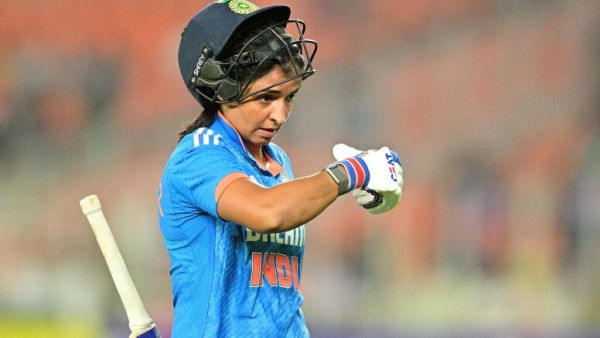There was little respite for head coach Amol Muzumdar after Australia completed a record chase against India in a league stage clash of the women’s World Cup at the ACA-VDCA Stadium here on Sunday.
Among the many things he was grilled about by the press was the guidance provided to batters, or the lack of it, to convert a good start into a total in excess of 350.
“Yes, of course (we give them guidance). What do you think? Do we guide them or not?” he replied.
That this interaction happened on a day when the top order finally came good in the tournament was an indication of the manner and magnitude of the defeat. Back-to-back losses have left India no option but to have some uncomfortable conversations about their combinations and execution on the field.
Dot-ball percentage
According to CricViz data, India registered a worrying 127 dot balls against Sri Lanka (42.8%), 173 against Pakistan (55.7), 185 against South Africa (58.4), and 128 against Australia (45.2). Among the top five, Pratika Rawal registered a 60.8 dot ball percentage, Smriti Mandhana 56.4, Harleen Deol 54.6, Jemimah Rodrigues 53.9 and Harmanpreet Kaur 53.1 in four games.
ALSO READ | Lower-order collapse cost us the match, says Harmanpreet after India suffers second consecutive defeat at ICC Women’s World Cup 2025
Compare this to their numbers from the year overall, and Harleen tops the chart with a 62.8 dot percentage. Pratika follows with 60.8.
During this World Cup, India has seen Smriti fall cheaply in its first three games, after which Harleen and Pratika struggle to maintain a sprightly scoring tempo with strike rates of 74.74 and 72.58, respectively.
The scrutiny might be harsh on Pratika, who has done a commendable job in place of a dropped Shafali Verma. In 17 ODIs alongside Smriti in the opening slot before this World Cup, she has failed to stitch a 50-plus run stand only four times. There have been seven fifty-plus stands, four 100-plus partnerships, and a record-breaking 233-run effort against Ireland.
Having Pratika’s solidity contributed greatly to Smriti unlocking an aggressive gear in her batting. Pratika admitted the pacing issue, and given she’s still taking her baby steps in international cricket, working on this element can greatly contribute to fewer palpitations early on for India.
ALSO READ | Can India still qualify for Women’s World Cup semifinal after loss to Australia?
The idea of having a deep batting lineup gets a little redundant if the batters are not striking at a rate that’d give the bowlers a fighting chance in defending the totals.
Bowling options
Having just five bowlers has limited skipper Harmanpreet Kaur’s options when the going gets tough.
India, under the Muzumdar-Harmanpreet leadership, has traditionally veered towards a five-batter five-bowler lineup. The same strategy has been used in the World Cup, with Renuka Singh and Amanjot Kaur alternating in the team to keep workloads in mind.
For India, Harmanpreet has had to come in as the sixth option recently. Pratika also rolls her arm from time to time. In comparison, Australia (eight), South Africa (seven), New Zealand (six), and England (seven) have a lot more bowling options at their disposal.
India smartly uses Radha Yadav’s athleticism on the field by subbing her in. Surely, her all-around abilities can be put to better use with a solid place in the eleven?
Changes are the need of the hour with a must-win game against England coming up on October 19, lest it all becomes too little, too late – if it already hasn’t.
Published on Oct 13, 2025





